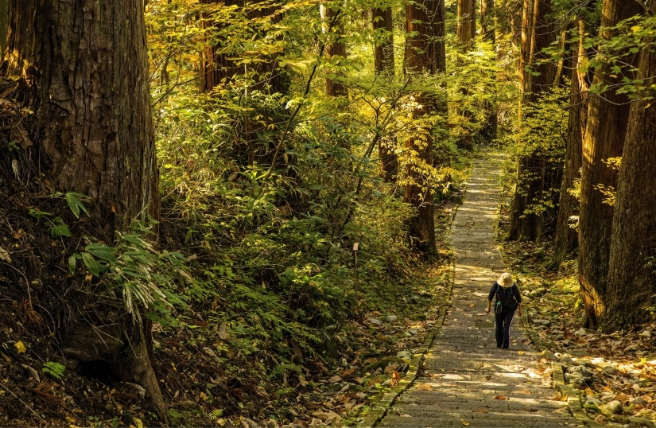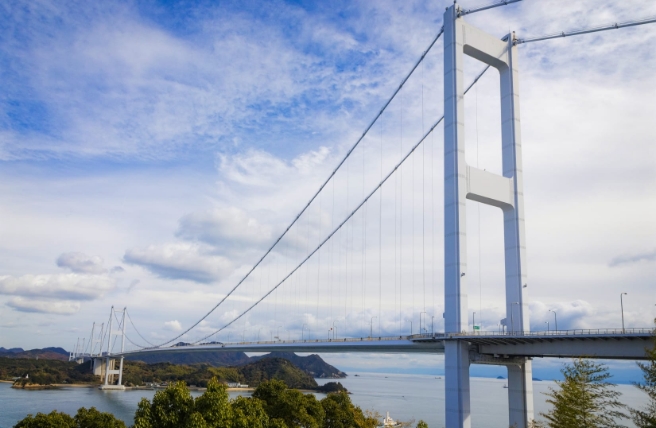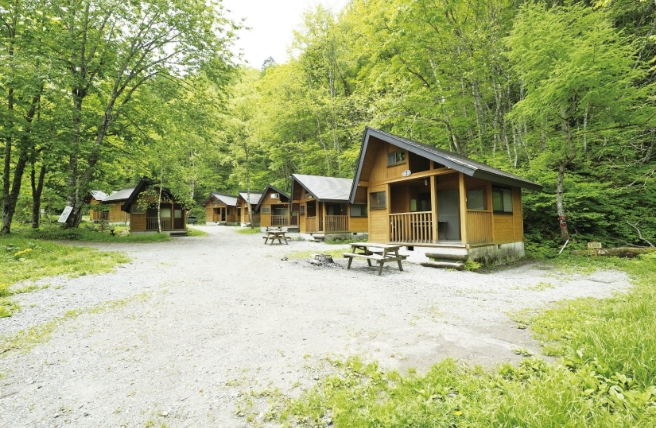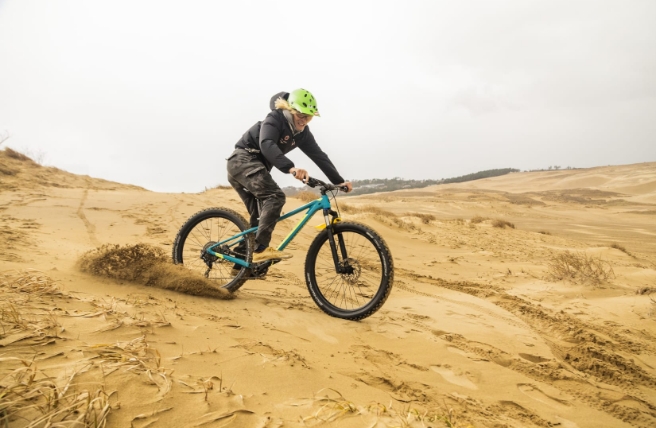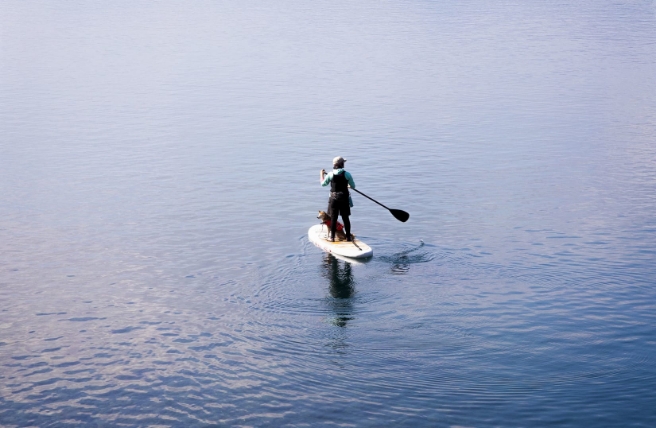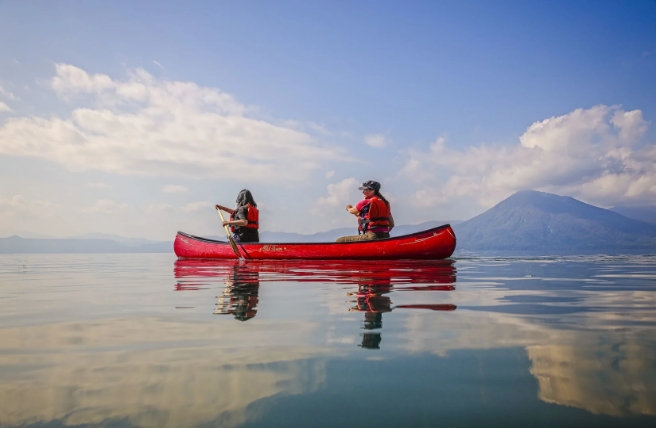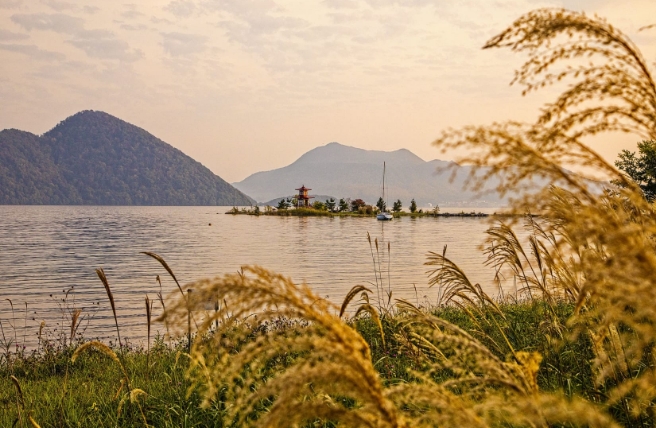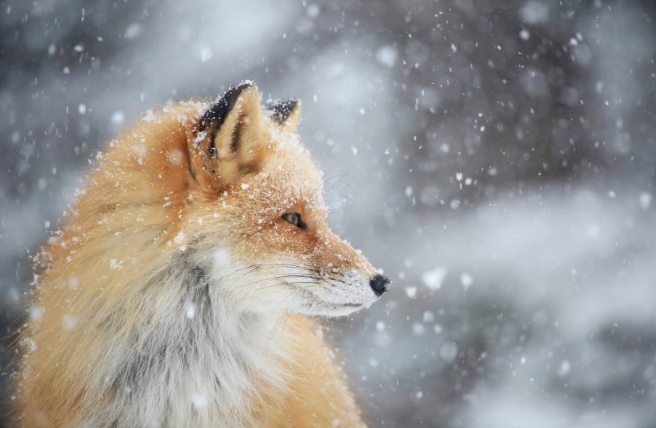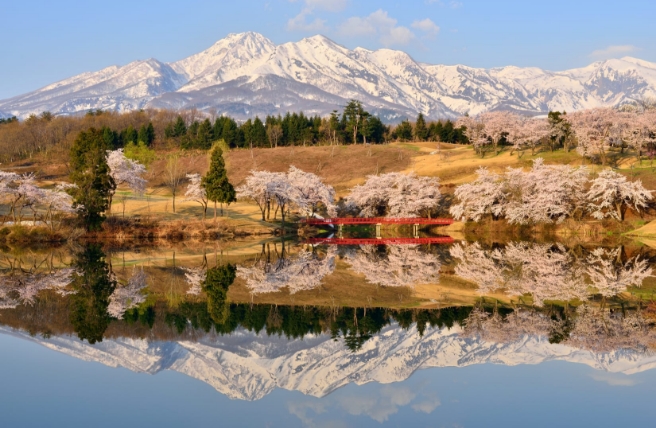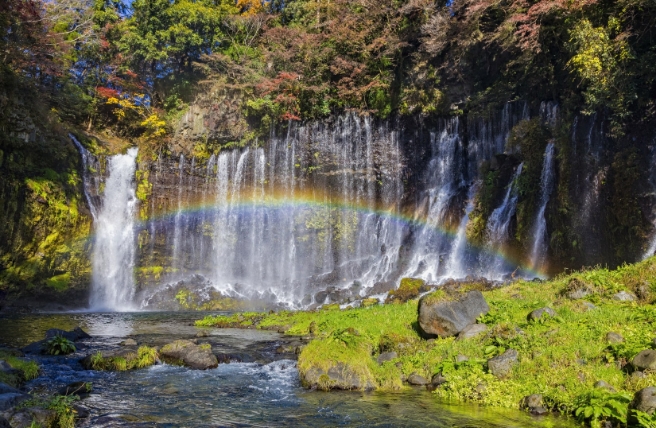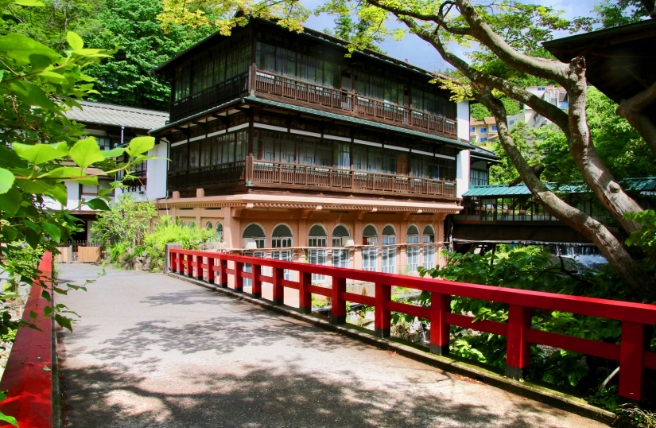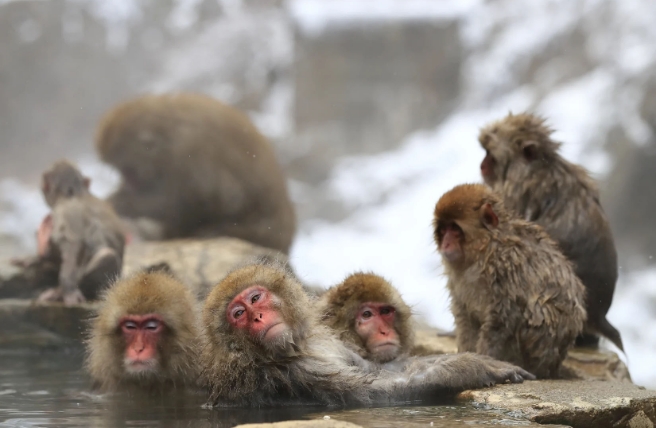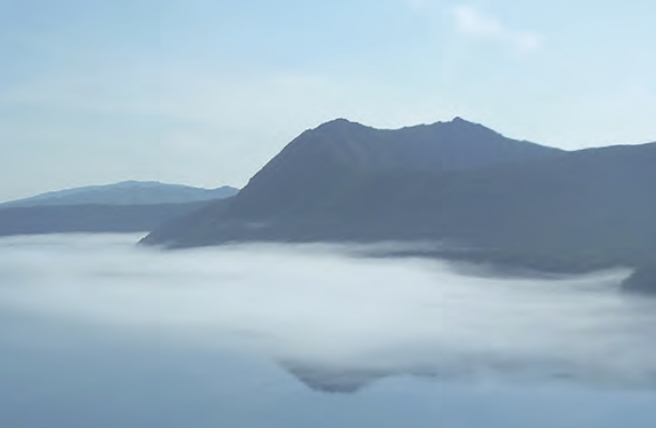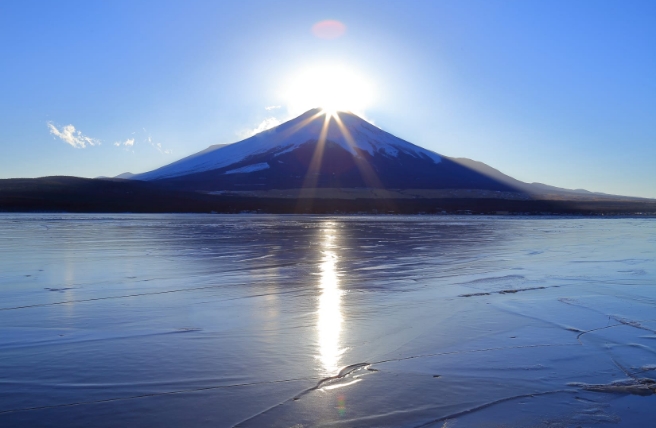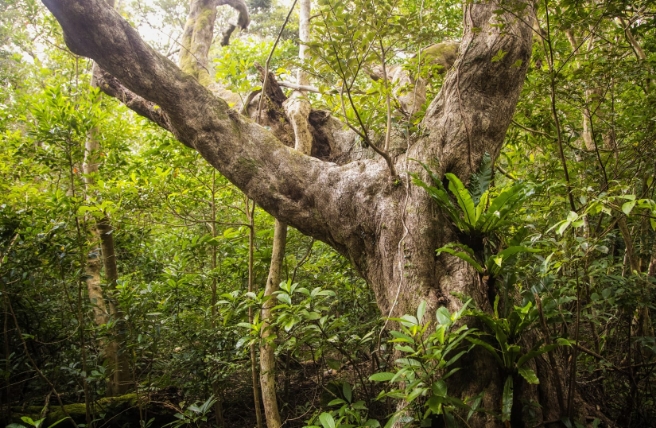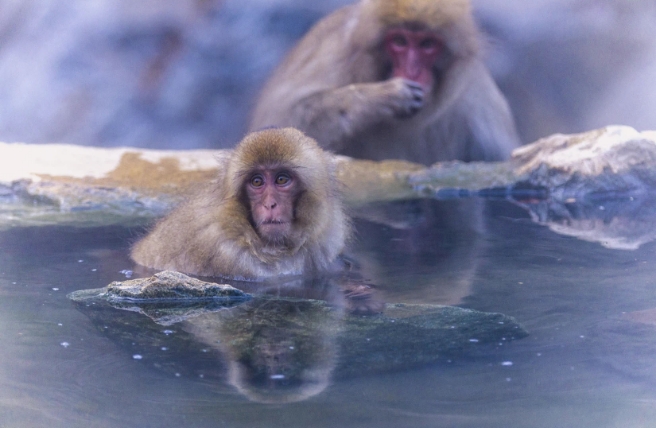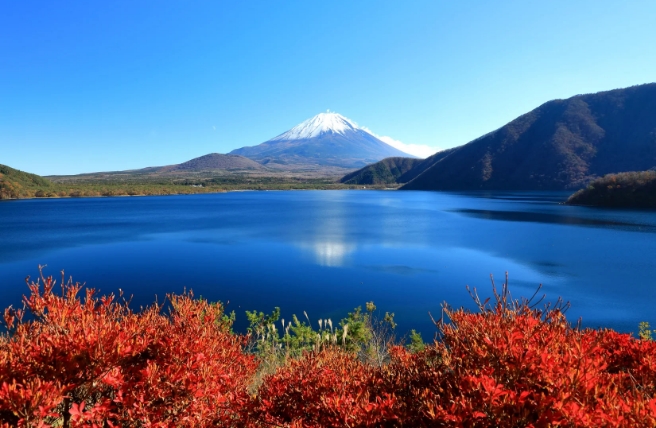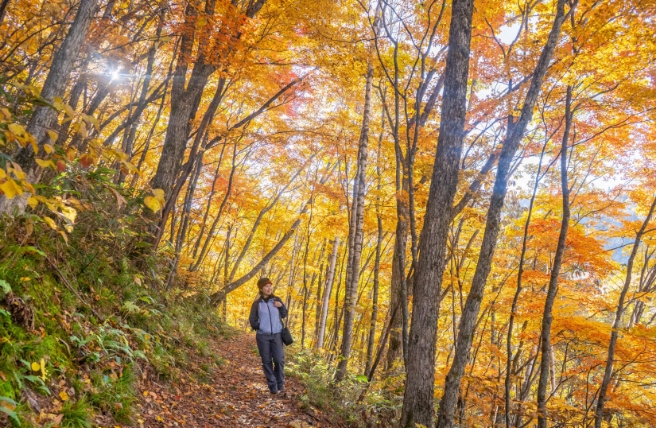A Rallying Point of Volcanically Active and Non-volcanic Mountains. People’s lives cradled in the workings of Mother Earth, and worships woven into scenery
Day 1
“What was the world (and more importantly, Japan) like over 40,000 years ago?”
That is a question that both scholars and the locals living around Nagano Prefecture’s Lake Nojiri want to know. Thus far, they have been able to uncover evidence of a massive genus of elephant known as the Nauman elephant. These creatures migrated from the mainland many millennia ago and thereafter got trapped in Japan when the land bridges disappeared.
One of the favorite local theories purports that there were actually also humans living in Japan during this period. Both academics as well as the local residents are trying their best to find definitive proof that this is the case but thus far, they have been only able to discover hints of their existence. Were they to come across something during their annual excavations, it would rewrite early Japanese history as we know it.
All of the current findings relating to this period are laid out at the Lake Nojiri Nauman Elephant Museum. The curation is partially the work of Kondo Yoichi, the director of the museum who is infectiously passionate about uncovering the truth of Japan’s earliest settlers. While I am known to be quite the obsessive type, even my mania couldn’t compete with his love for excavating what Japan was like 40,000 years ago.
The Lake Nojiri Nauman Elephant Museum is but one of many attractions in the majestic Myoko-Togakushi Renzan National Park. Should you find yourself in this part of Japan, I highly suggest you stop by for a unique look at Japan’s past!

This snowy paradise is known as Lake Nojiri. Found in the heart of the Myoko-Togakushi Renzan National Park, this body of water is a central hub of all sorts of activity. During the winter months, a popular pastime is fishing for smelt. Known as wakasagi in Japanese, fishing for these little guys is a great way to forget about the worries of the world for a few hours.
All around Lake Nojiri, you’ll find a number of locales that will ferry you out to one of their heated boats. Here, you can fish for wakasagi in peace without needing to worry about risking frostbite. Though the boats lack a bit of the authentic touch that you might get from fishing through a hole drilled in the ice, it’s a lot more comfortable than being exposed to the elements all day.
One of the keys to successful wakasagi fishing is being able to calm down and focus on the moment. This is something my workaholic self was quite bad at doing during my stint in Myoko-Togakushi Renzan National Park. The fact that I had trouble concentrating on the rod in my own hand is telling of my need for a lazy day spent doing little else but fishing for a few wakasagi.
Note that many of the shops that will take you out to their boats will also cook up your catch for you after your return. If that isn’t motivation to fish your heart out, I don’t know what is...

Day 2
The Myoko-Togakushi Renzan National Park never ceases to amaze me with its eclectic array of attractions. For example, pictured here we have Lamp Guesthouse & Restaurant’s “The Sauna,” an authentic Finnish sauna found right here in Nagano Prefecture.
Seeing as I spent some time for work in Finland, I was quite surprised to see a full-fledged Finnish sauna in Japan. They are quite different from the ones you often find in Japanese hot springs. Especially after a long day of wakasagi fishing on Lake Nojiro, an extended session at “The Sauna” is the perfect way to warm up.
Of course, one of the best things about “The Sauna” is that it is connected with Lamp Guesthouse & Restaurant. This means that you can order food directly to the area outside your sauna. Alternative, you rather dine indoors, that option is available to you too.
Lamp Guesthouse & Restaurant serves up a mean hamburger so give one of their various concoctions a try before or after your sauna.

Day 3
One of the highlights of Myoko-Togakushi Renzan National Park (and indeed all of Nagano Prefecture) is the sacred Togakushi Shrine. Nestled at the base of snowy Mt. Togakushi, this ancient site consists of five separate but interconnected shrines. While I won’t dive too deep into the weeds here, know that each enshrines a different deity.
Of all the quintuplet shrines, my favorite is the Okusha or “Inner Shrine.” By no means easy to get to during the wintertime, this sanctuary was formerly a place for ascetic training. These days though, the main allure is the towering Cryptomeria trees that line the path to the Okusha. As can be seen in one of the shots here, they are PERFECT for the Gram.
Since gettin to the Okusha can be rather dangerous during wintertime, it's best to only go as far as the Zuishinmon gate. From here, you can get a good shot of the corridor of cryptomeria trees without needing to risk getting hurt or worse, caught in an avalanche. Still, it's a snow trek so if you're not up for it, you can easily reach the Chusha or “Middle Shrine” instead without risking much.
Even if you forgo the Okusha in winter, Togakushi will take the better part of a day without a rental car. To maximize your time in Togakushi, I suggest you spend the night in one of the areas shukubo. At these temple lodgings, you can experience a slice of authenticity that most travelers miss out on. During my stay, the shukubo that I stayed at was over a few hundred years old.

One of the best ways to warm up in winter after exploring Togakushi is with some soba.
Every time that I visit Togakushi, I always make a beeline for some locally made noodles. You'll find a bunch of vendors all throughout the region but the shop pictured here.
In addition to the standard soba fare, this restaurant also serves up some soba-inspired side dishes. They even have a soba cheese cake as can be seen in the final shot.
If you're like me and always try to sample the meibutsu (the local specialty), be sure to have some soba while in this part of Myoko-Togakushi Renzan National Park!

